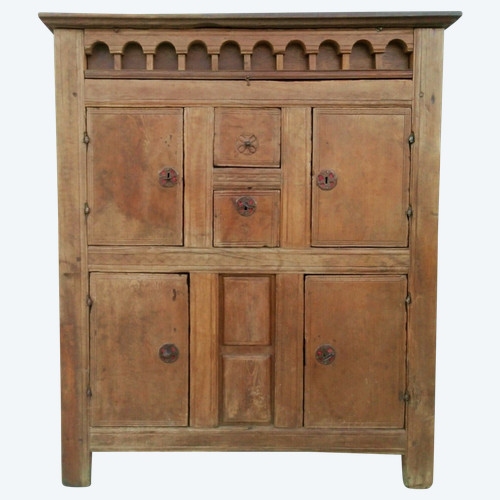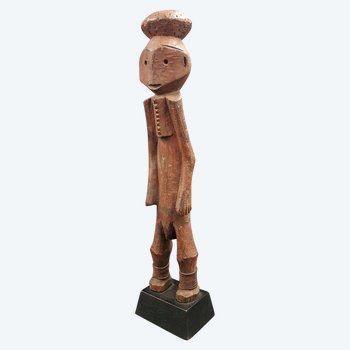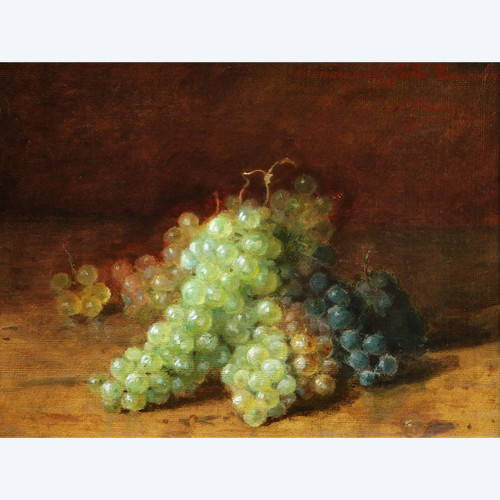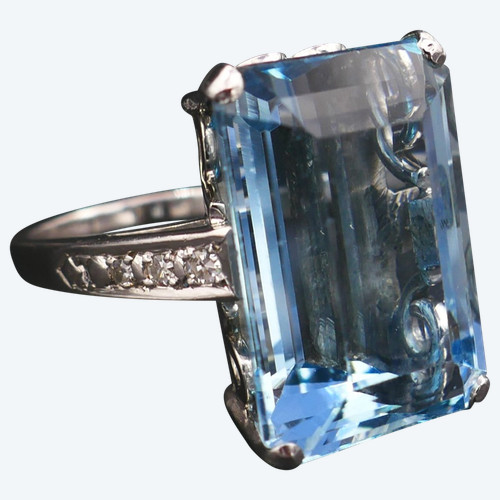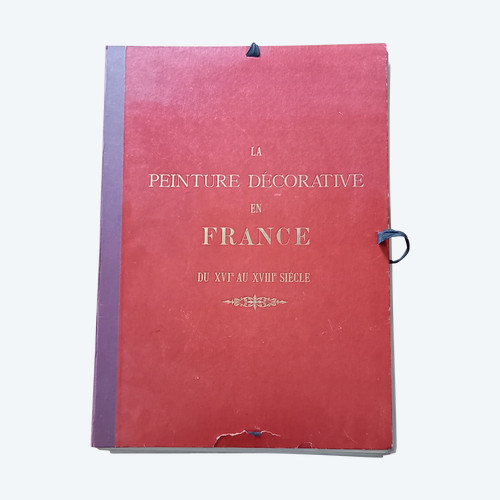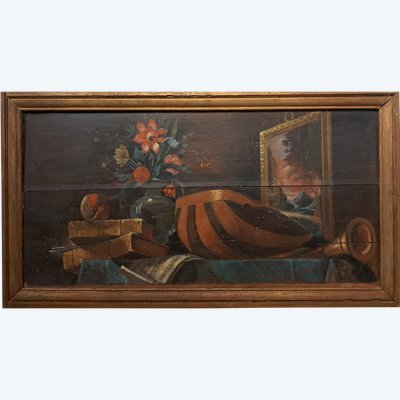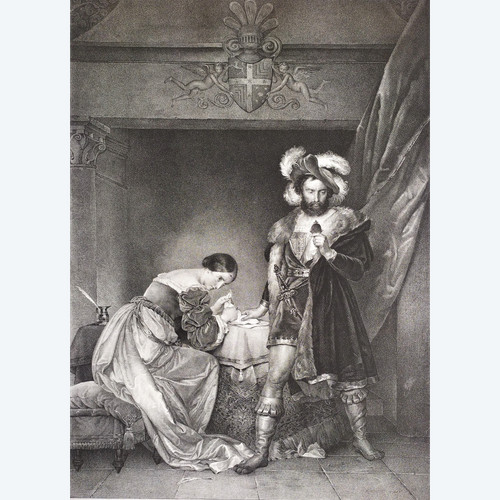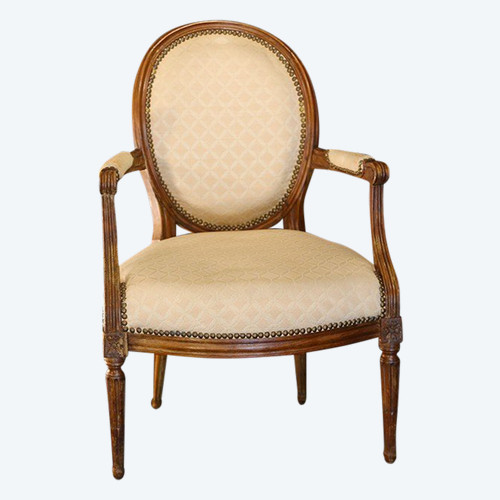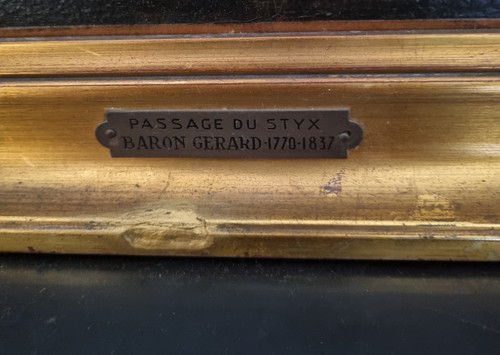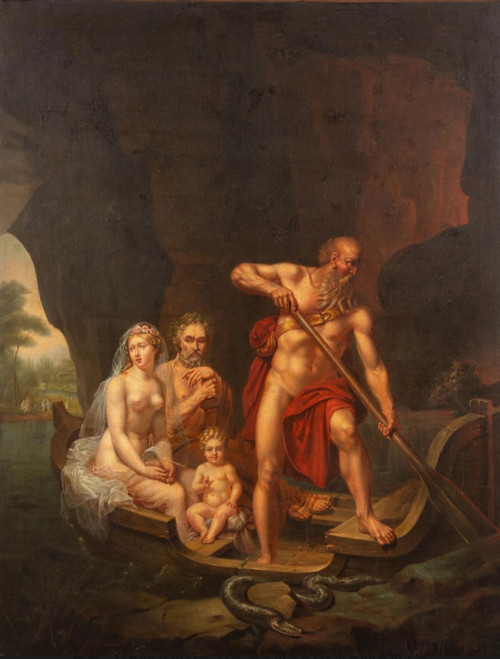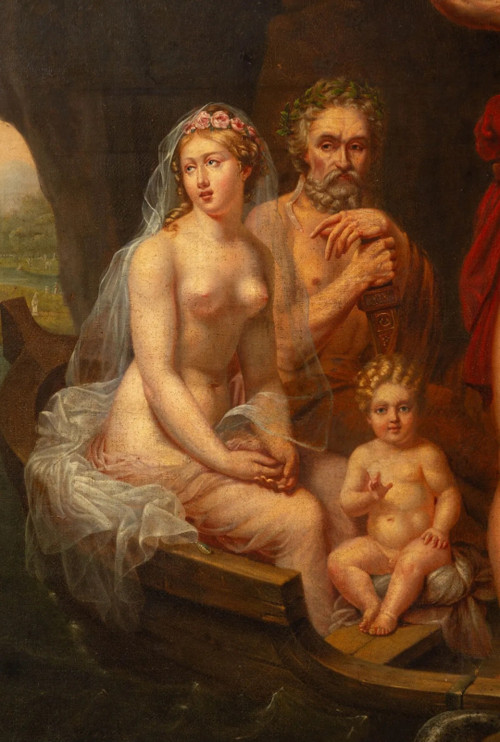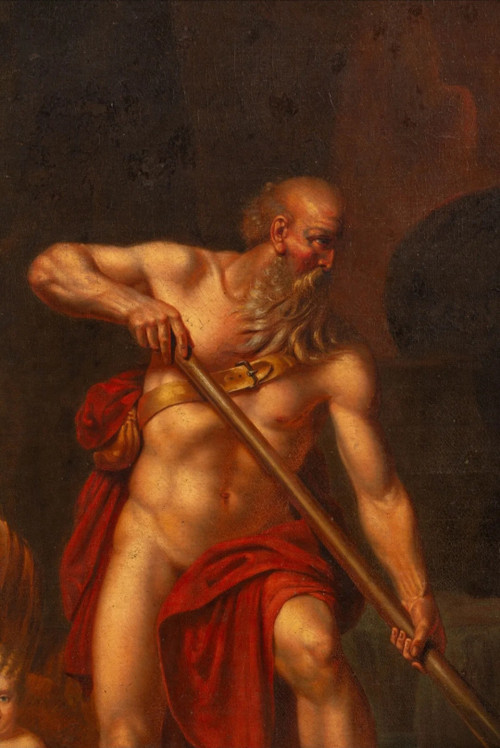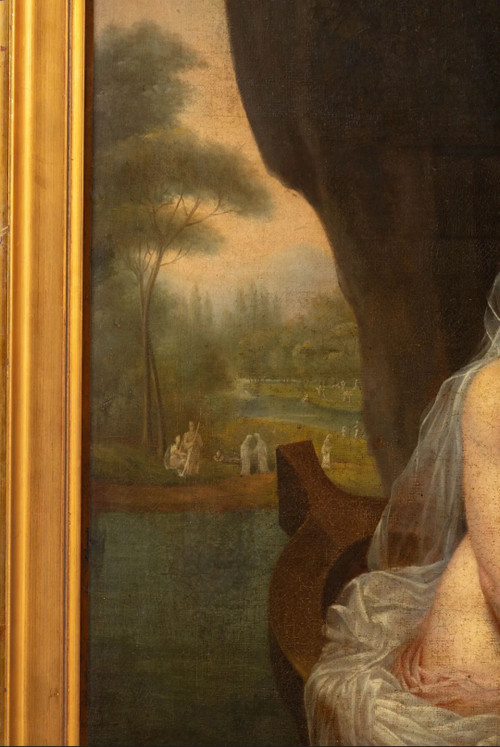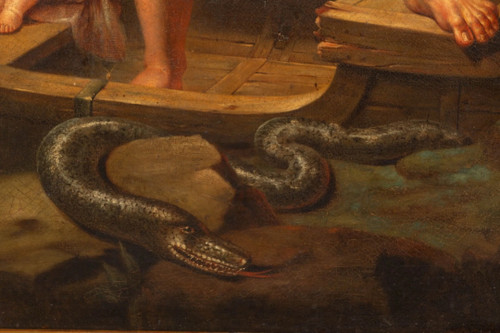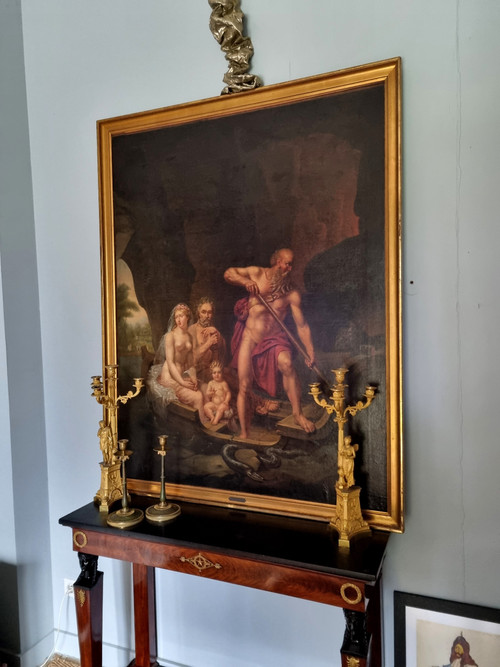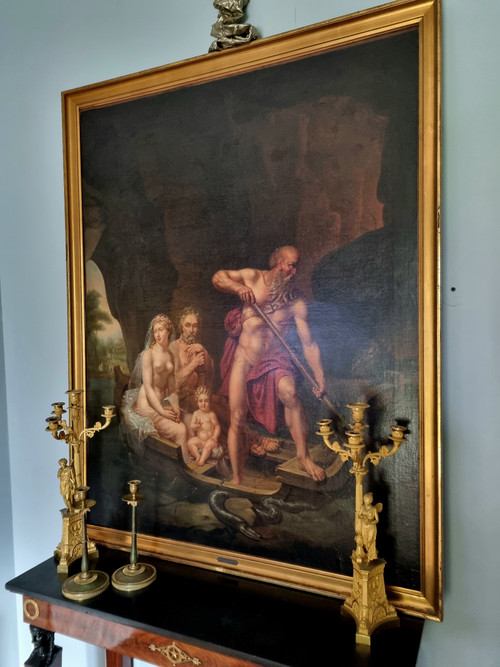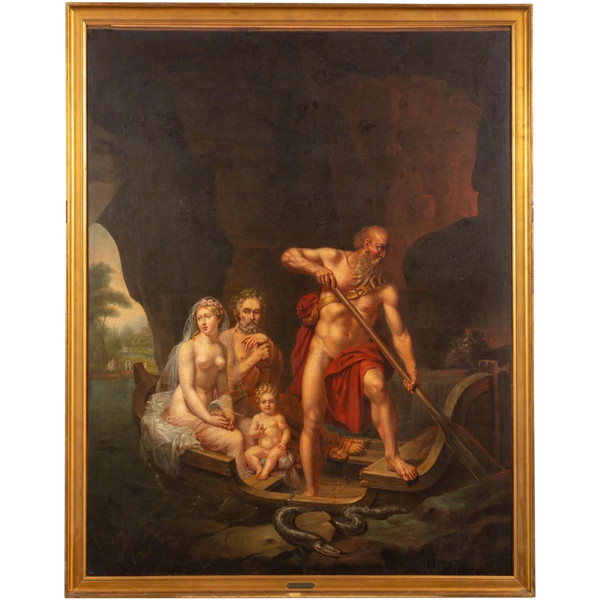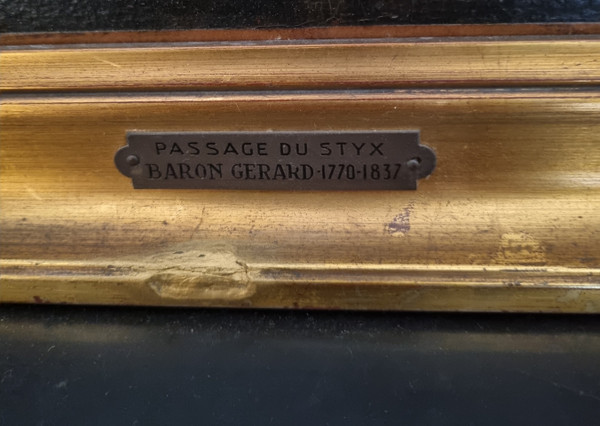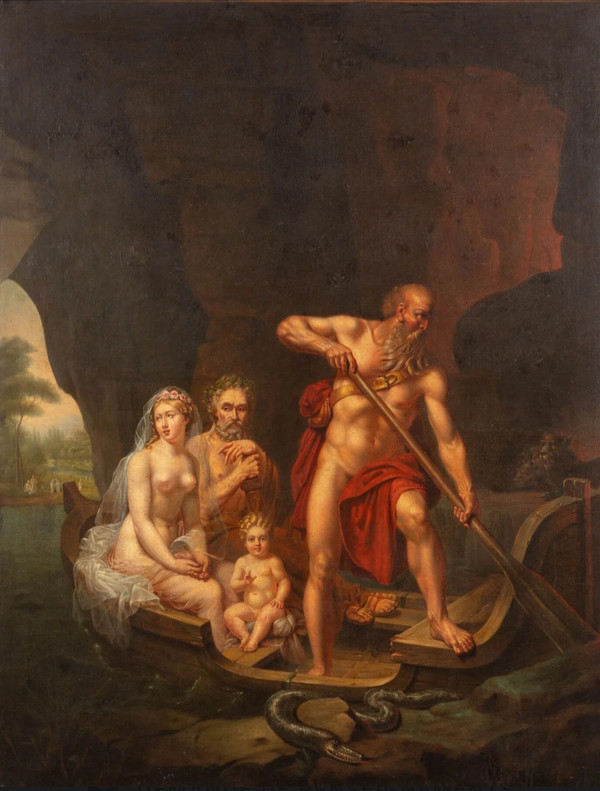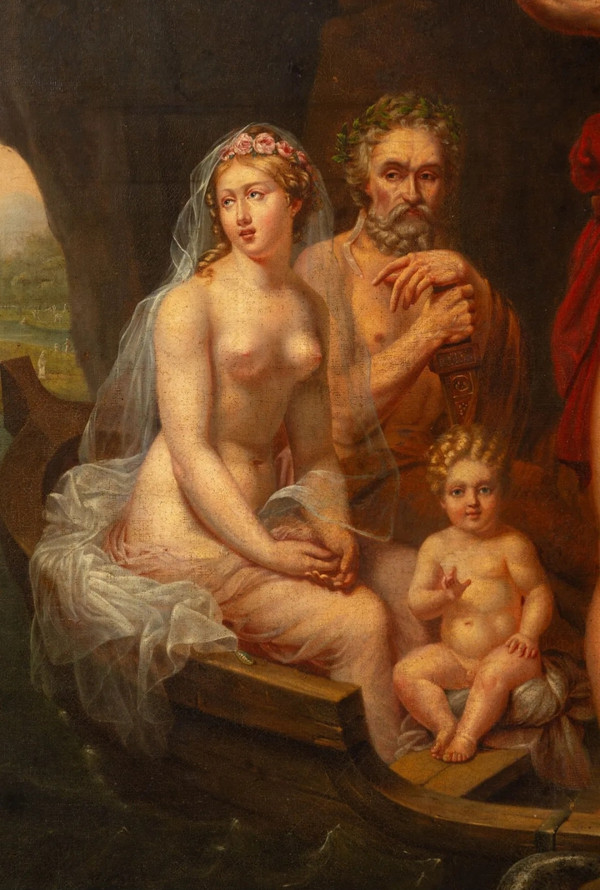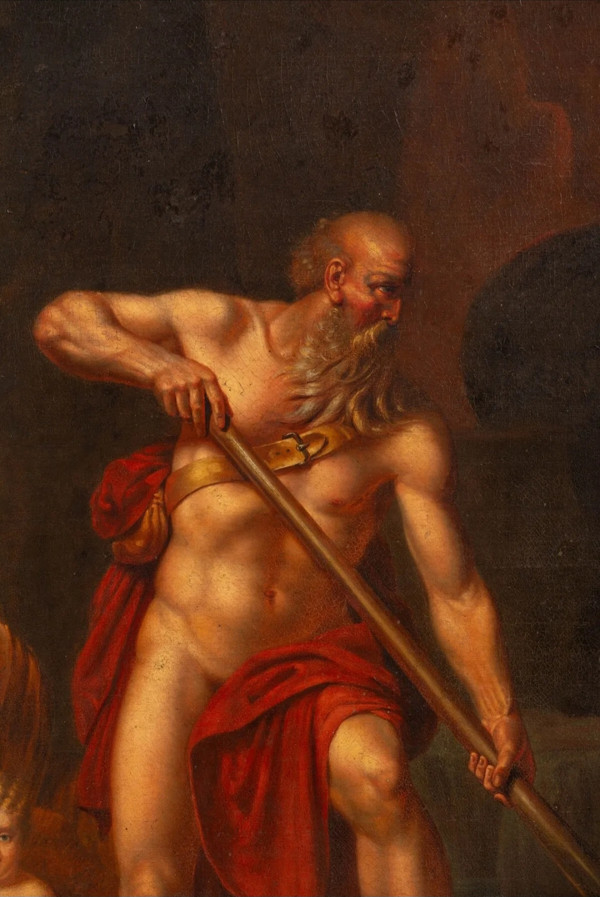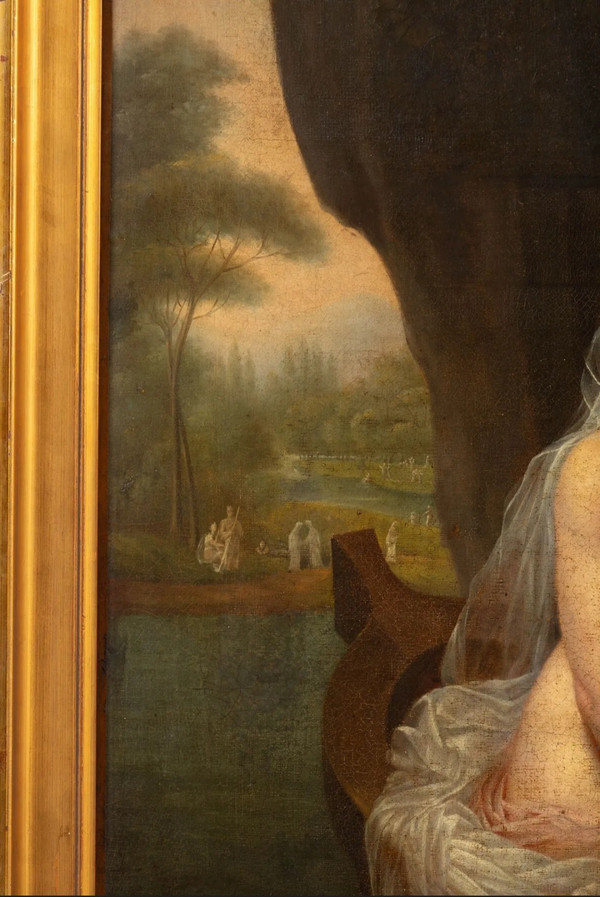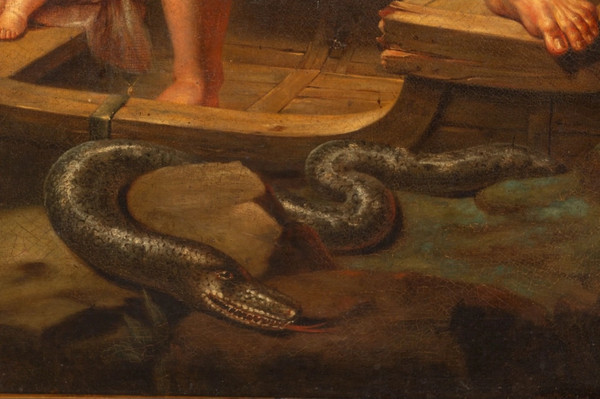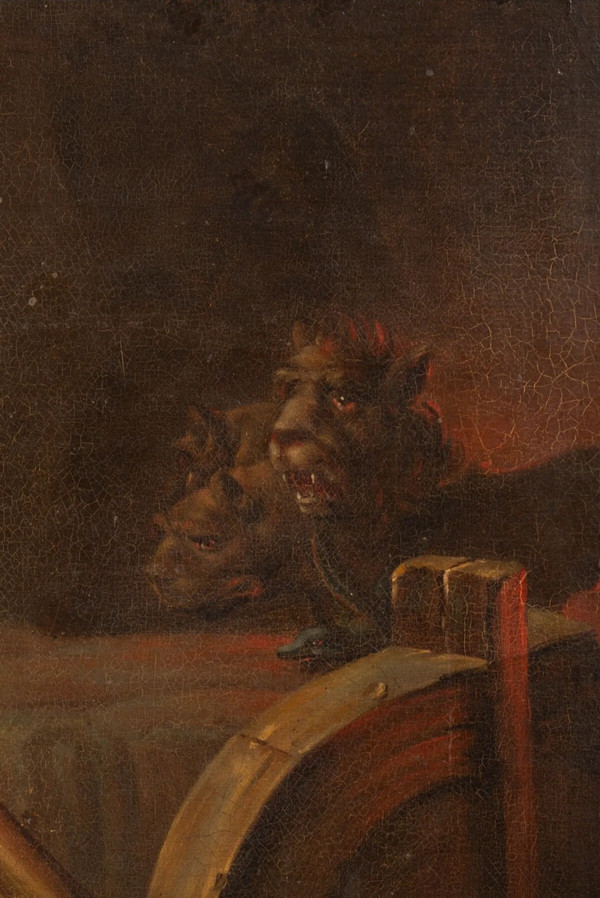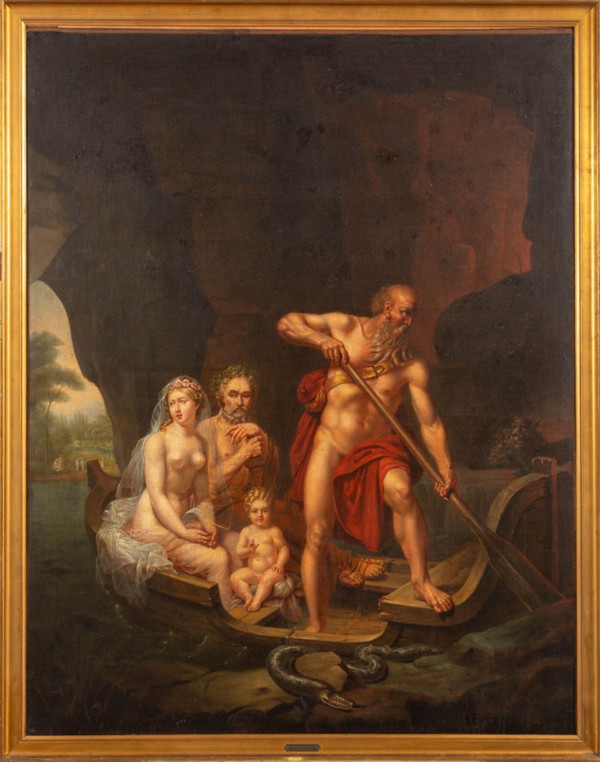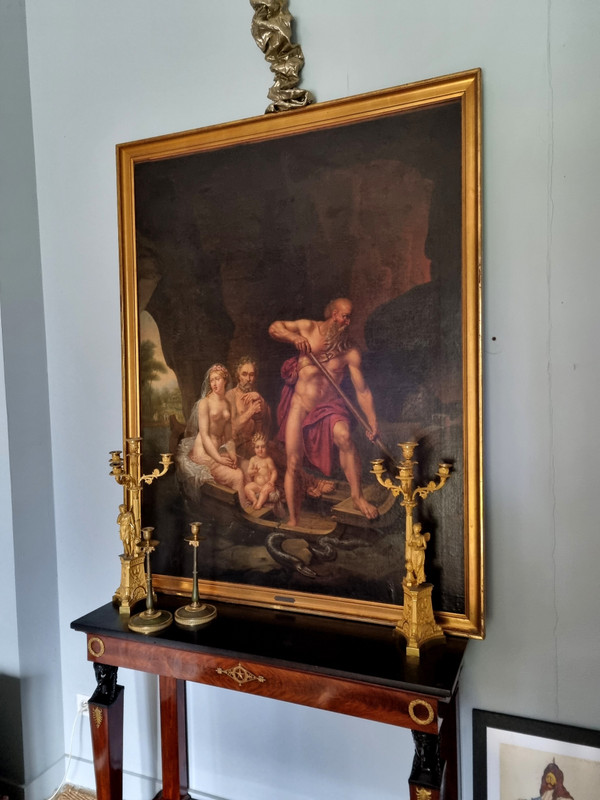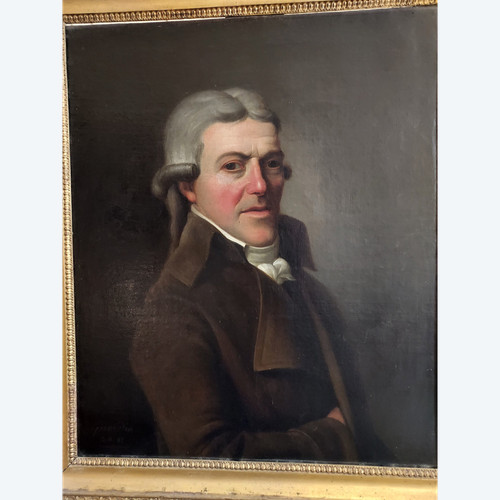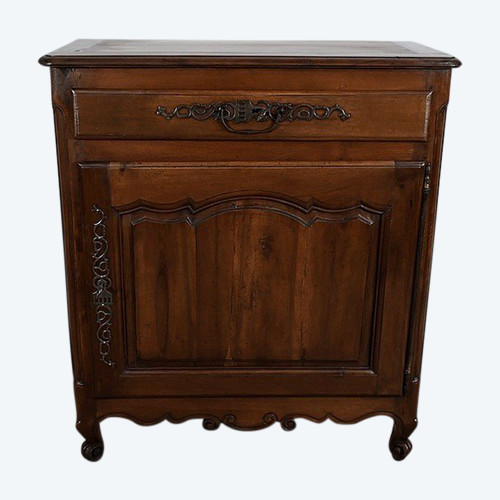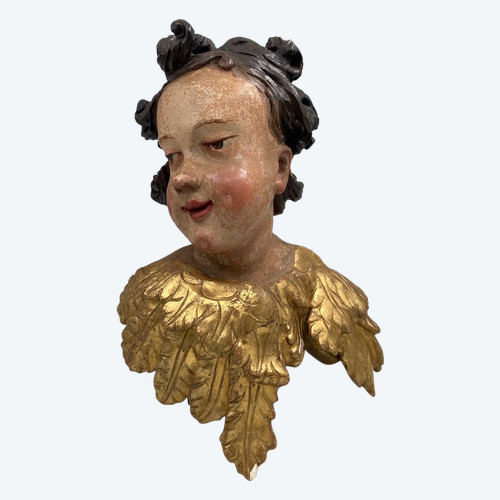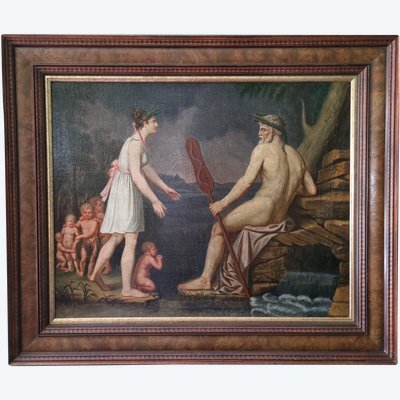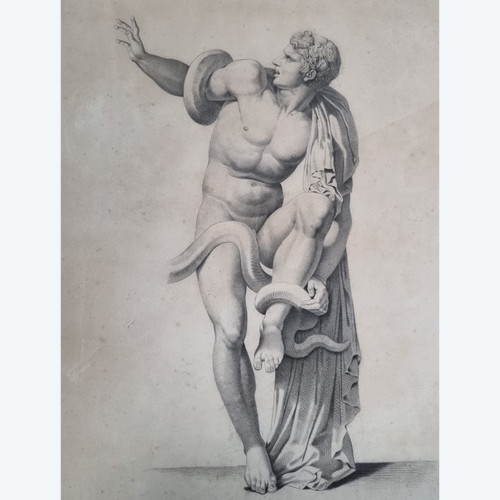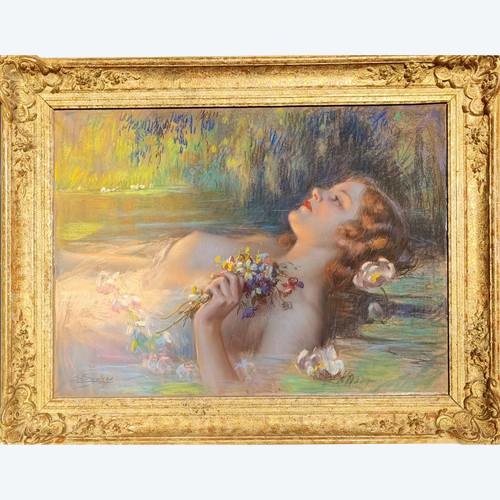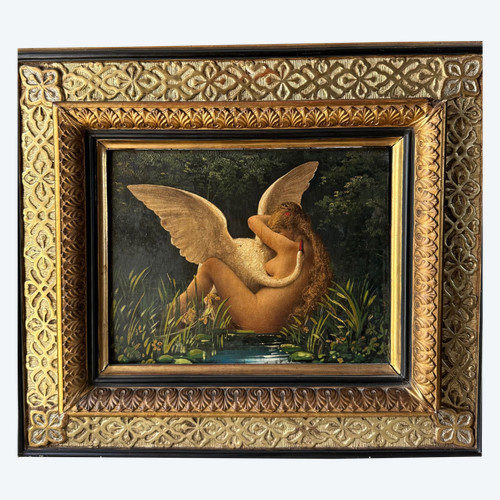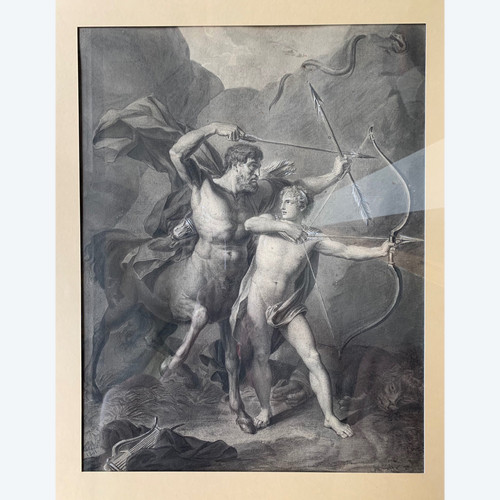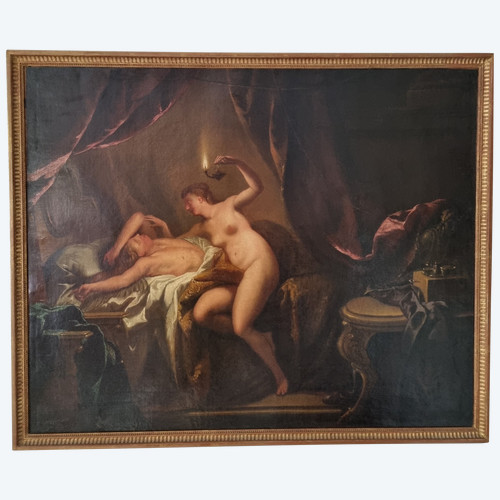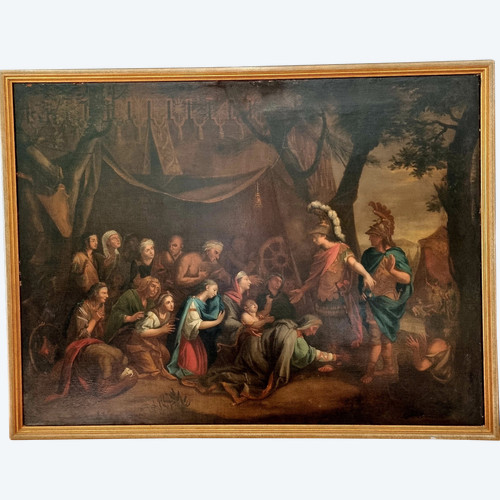This description has been translated and may not be completely accurate. Click here to see the original
Superb and imposing oil on canvas, attributed to François Gérard (known as Baron Gérard), executed between the end of the 18th century and the very beginning of the 19th century.
The painting, titled on the cartridge, "Passage of the Styx", depicts the descent of Aeneas into Hell.
The hero, accompanied by the Sibyl of Cumae, travels to the kingdom of Hades to find his father Anchises.
There we find Charon the ferryman (or the ferryman), son of Erebus (the Darkness) and Nyx (the Night), the cerberus (three-headed dog, guardian of the gate to the underworld) and the serpent (favorite animal of Hades).
On the left side, in the background, wandering souls are represented. These, not having paid the mite, are condemned to wander for a hundred years on the banks of the Acheron and the Styx.
The little boy is the storyteller of this scene. He is the only one looking at the spectator, like a witness coming to report an event to his audience.
In the 1st century BC. BC, in the Aeneid, Virgil describes Charon wielding a rust-colored oar, during the descent of Aeneas, accompanied by the Sibyl of Cumae, with the aim of seeing his father Anchises (canto VI of the Aeneid ). Virgil also describes the desperate souls seeking to cross the Acheron.
Although this painting could be attributed to Nicolas Louis François Gosse, no similarity appears between this painting and those of this artist.
The work, the subject, the pictorial techniques as well as the "brushstroke" correspond perfectly to the work of François Gérard.
Beautiful state of conservation, some old restorations.
Not cleaned.
Original canvas.
Pretty gilded wood frame, good condition.
François Gérard (known as Baron Gérard), 1770-1837:
Student of Jacques-Louis David, court painter under Napoleon I and later painter to Kings Louis XVIII and Charles X, François Gérard is the portraitist of the sovereign families of Europe.
Son of a French civil servant stationed in Rome, Gérard was born in the Eternal City but received his artistic training in Paris, notably with David from 1786.
Winner of the second Prix de Rome in 1789, he was prevented from competing again the following year, but could stay in Italy. He began at the Salon of 1791, and, protected by his master David, was able to devote himself fully to his art, and obtained accommodation and a studio at the Louvre. His Bélisaire, presented at the Salon of 1795, and the portrait of his friend Isabey, the following year, launched his career.
Noticed by the Bonapartes, he worked for them at Malmaison, then as official painter of the Empire, delivering historical, mythological and portrait paintings, including official effigies of sovereigns in 1805 and 1807.
Uniting the refinements of the 18th century with the most modern codes of representation, François Gérard has enjoyed great success in the art of portraiture, always knowing how to renew himself in the layout and sending back to his models the image of the most elegant elegance. more flattering. Between 1796 and 1836 he delivered more than eighty full-length portraits, repeated in number by his workshop, of which Versailles keeps the reductions by his hand or the workshop, acquired at his death.
As with all of my art objects and furniture, I am very careful to be able to offer them to you at a very low expert estimate value.
My objects are photographed naturally, without going through a photo studio. As a result, you can appreciate them as close as possible to their reality.
Not putting all of my Furniture and Objects of Art on my website, I invite you to follow my Instagram account where you can enjoy all of the new items: @monantiquaire
Ref: THEZ0V4W50
 Louis XIV oak sacristy cabinet sideboard
1.300 € EUR
Louis XIV oak sacristy cabinet sideboard
1.300 € EUR
 Napoleon marble inkwell, 19th century
450 € EUR
Napoleon marble inkwell, 19th century
450 € EUR

